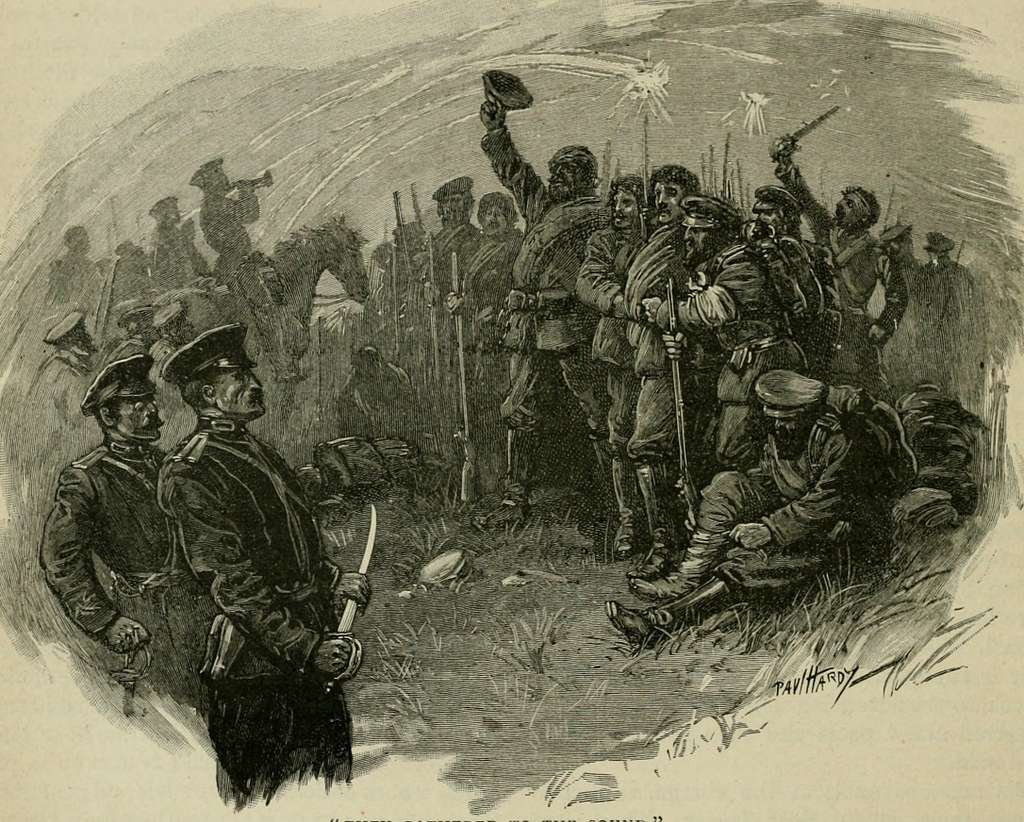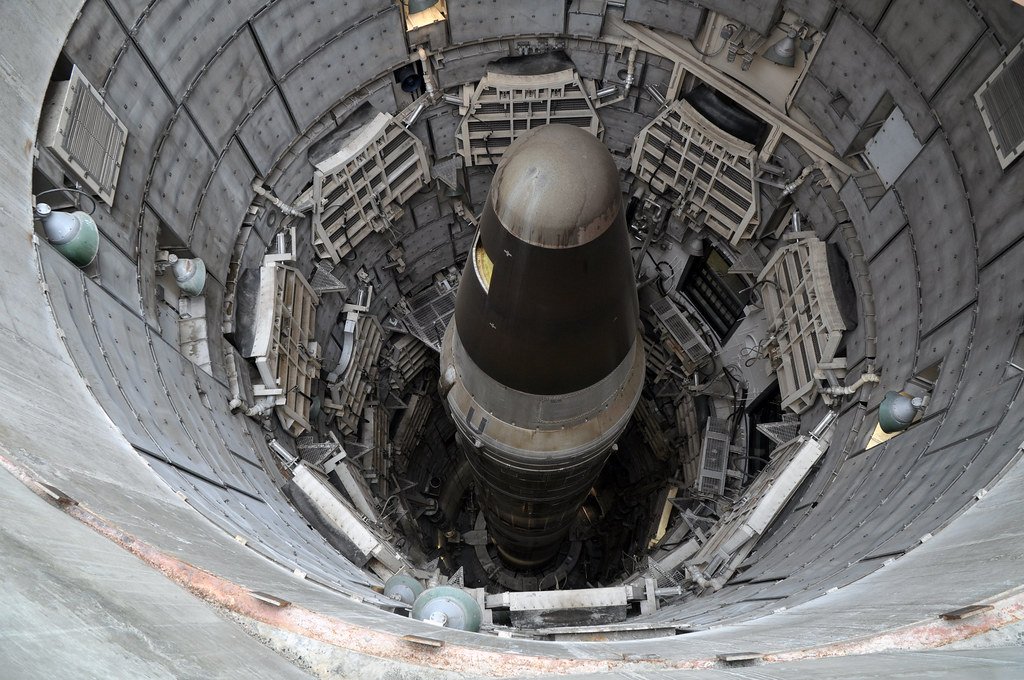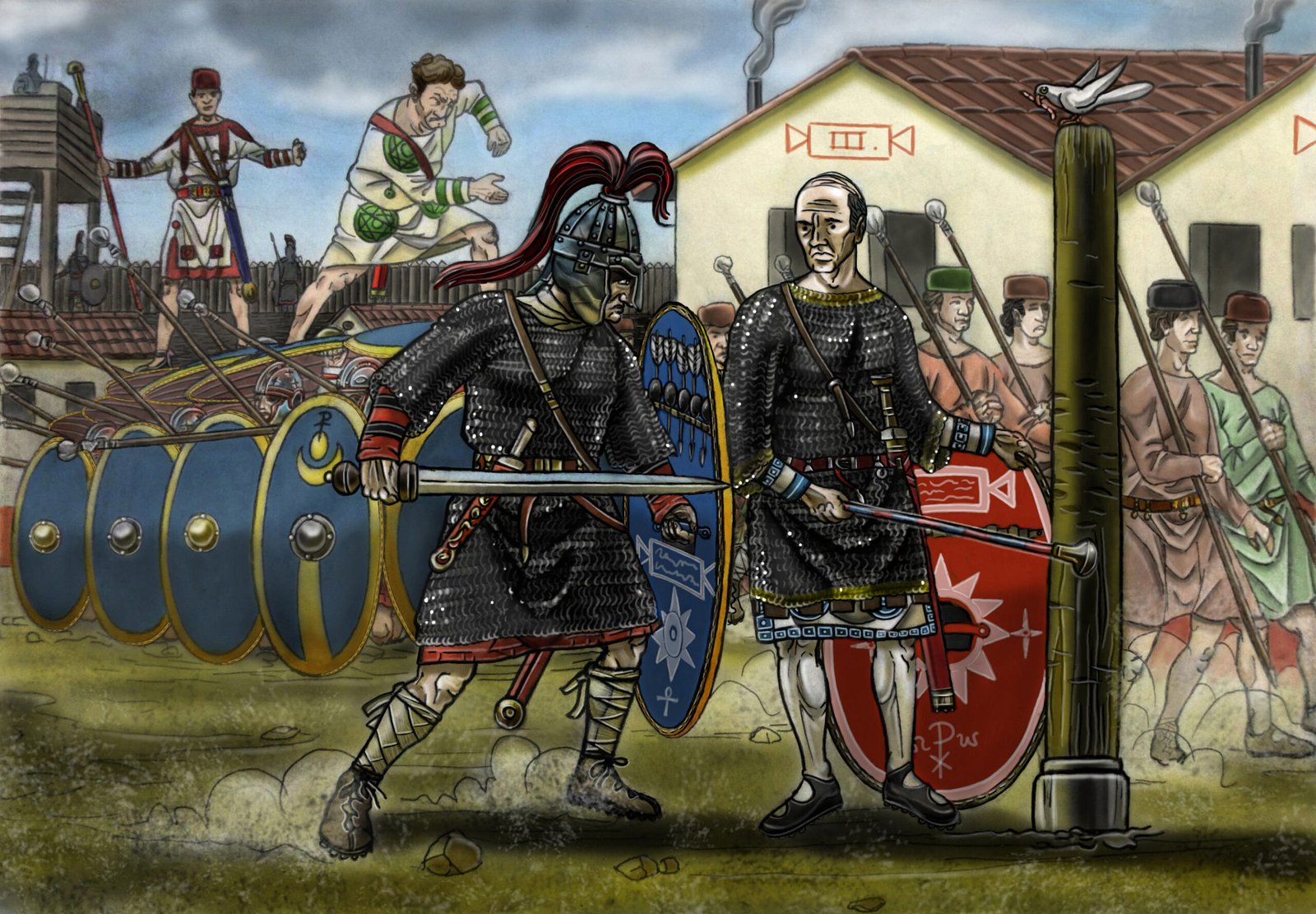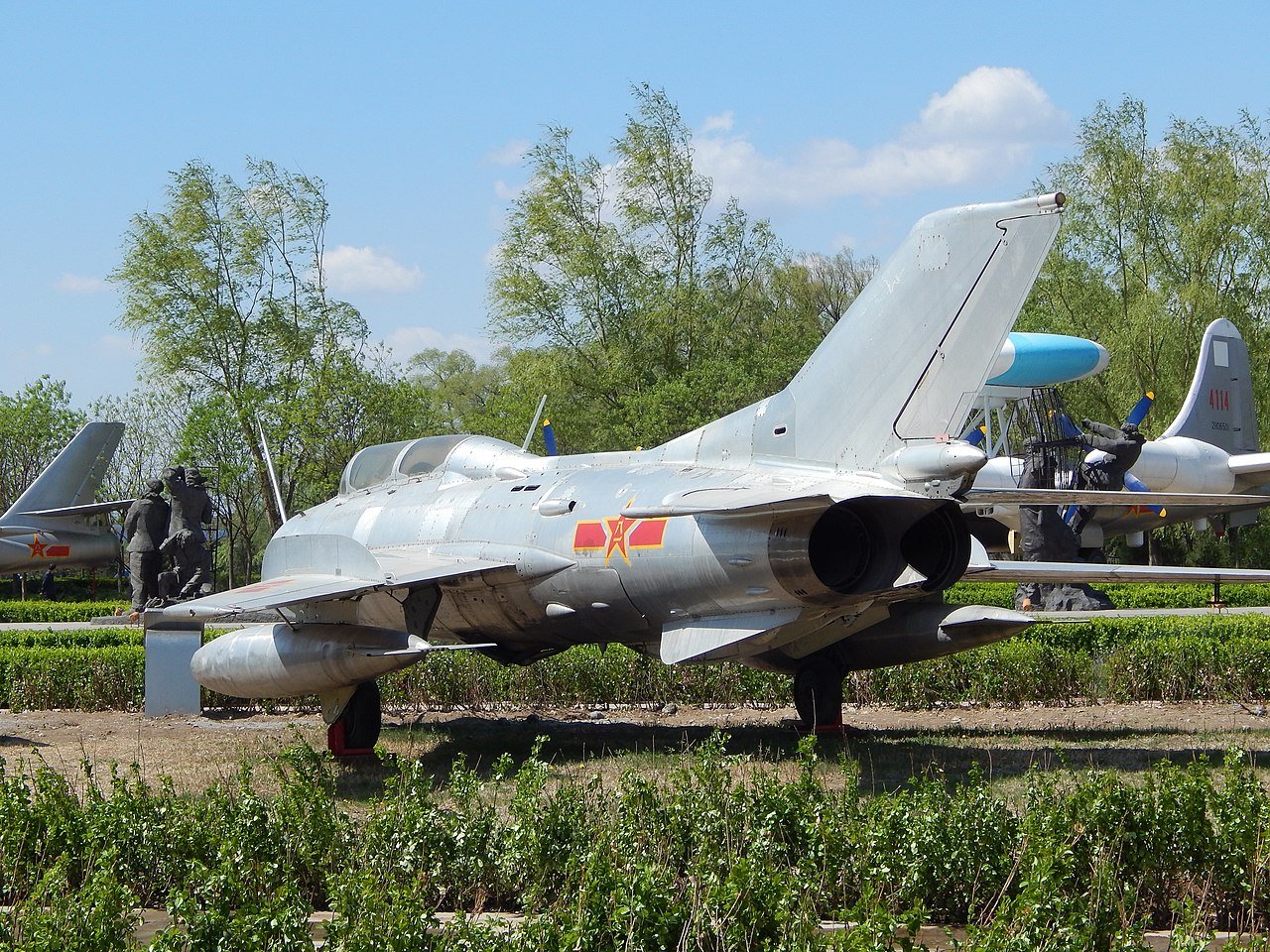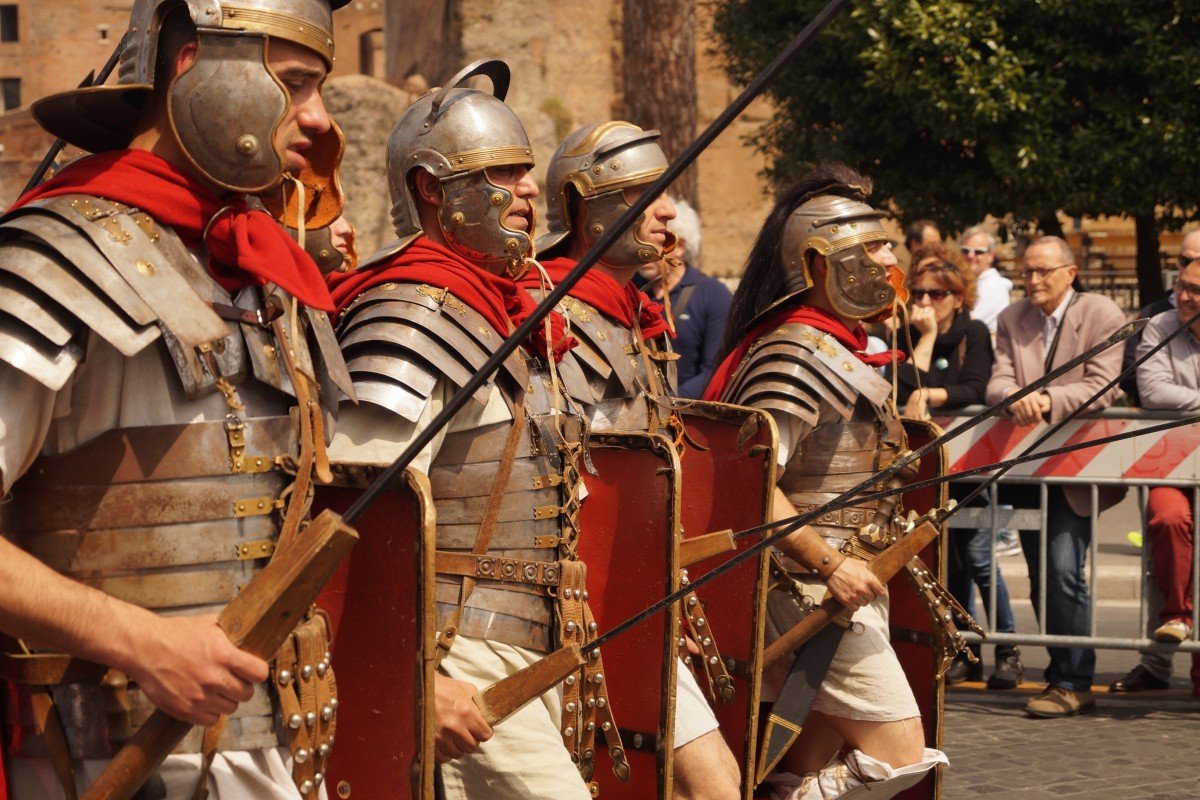The indelible legacy of the Roman Legionary resonates through history, its unrivaled military prowess etched across time. At the core of their dominance lay a symphony of weapons that shaped the destiny of the Roman Empire. As we embark on this immersive exploration, let’s first address three fundamental questions that lay the foundation for our journey into the heart of ancient warfare:
Table of Contents
What was the main weapon of the Roman legionaries?
The main weapon of the Roman legionaries was the “Gladius.” This iconic short sword became synonymous with the efficiency of close-quarters combat, reflecting the disciplined and highly effective fighting style of the Roman legions. The Gladius typically measured between 18 to 24 inches in length, featuring a double-edged blade designed for thrusting and slashing. Its compact size allowed for quick and precise maneuvers in the midst of battle, making it ideal for Roman military tactics that emphasized tight formations and disciplined, close combat.

The Gladius was more than a weapon; it was a symbol of the Roman military, might, and discipline. Its adoption was a strategic choice, enabling the legions to excel in the brutal hand-to-hand combat that characterized ancient warfare. The design, forging techniques, and psychological impact of the Gladius on the battlefield underscored its significance as the primary weapon wielded by Roman legionaries, showcasing the meticulous planning and adaptability that were hallmarks of the Roman military machine.
What was the most powerful Roman weapon?
The most powerful Roman weapon was the Ballista, an ingenious piece of ancient artillery that revolutionized Roman warfare. This siege engine, resembling a giant crossbow, harnessed tremendous mechanical power to propel large bolts or stones with exceptional accuracy and force. Developed during the 4th century BCE, the Ballista played a pivotal role in shaping the outcome of battles and sieges. Its ability to launch projectiles over considerable distances made it a formidable weapon, disrupting enemy lines and fortifications.

The Ballista’s power lay in its sophisticated engineering, featuring a torsion-powered system that stored and released energy to launch projectiles. The machine’s efficiency in hitting distant targets with precision distinguished it as the most potent weapon in the Roman military arsenal. The strategic deployment of Ballistae on the battlefield and during sieges afforded the Roman legions a decisive advantage, showcasing the significance of technological innovation in ancient warfare. As a testament to its power, the Ballista not only influenced Roman military tactics but also left an enduring legacy in the evolution of siege weaponry throughout the ancient world.
What were the three fighting weapons of the Roman army?
The three fighting weapons of the Roman army were:
Pilum: Versatile Roman Javelin
The Pilum, a cornerstone of the Roman arsenal, embodied versatility on the battlefield. Crafted for both ranged assaults and disrupting enemy formations, its aerodynamic design ensured a lethal combination of accuracy and penetration. As Legionaries unleashed volleys of Pilum, they not only inflicted immediate damage but also sowed disorder among adversaries, exploiting vulnerabilities in armor and shields. This dual-purpose weapon became a strategic asset, influencing the ebb and flow of ancient warfare.
Dolabra: Legionary’s Multi-Functional Tool

The Dolabra, a quintessential multi-tool, epitomized the resourcefulness of Roman engineering. Blending the functions of an axe and pick, it transcended the traditional boundaries of weaponry. In the chaos of combat, the Dolabra served as a lethal instrument, while in moments of respite, it seamlessly transitioned into roles vital for military logistics. From fortification to construction tasks, the adaptability of the Dolabra underscored the pragmatic approach of Roman Legionaries beyond the immediate demands of battle.
Hasta: Symbolic Spear of Authority
The Hasta, a spear-wielding both martial prowess and symbolic significance, added a unique dimension to Roman military strategy. In the hands of Legionaries, it served not only as a lethal weapon for thrusting in close combat but also as a symbol of authority and discipline. The Hasta’s dual role underscored the Roman emphasis on Hierarchical structure and order, instilling a sense of command on the battlefield. This symbolic resonance, combined with its combat utility, made the Hasta a symbolic representation of the Roman Legion’s discipline and martial prowess.
Top 9 Most Important Weapons of the Roman Legionary
1. Gladius: The Sword of the Legion

The Gladius, pivotal for Roman Legionaries, embodied mastery in close-quarters combat. Its precision-crafted design, featuring a double-edged blade and compact length, facilitated swift and lethal strikes in ancient warfare’s tumultuous hand-to-hand engagements. Forged with advanced techniques rooted in Roman blacksmithing tradition, the Gladius ensured durability and sharpness, guaranteeing reliability on the battlefield. Beyond its physical prowess, the Gladius held a profound psychological impact, symbolizing Roman military might and discipline. Serving as a potent emblem, it instilled confidence and fearlessness in Legionaries, unveiling not just a weapon’s technicalities but the ethos of the Roman Legion—a testament to the skill, discipline, and indomitable spirit shaping the empire’s destiny.
2. Pilum: Piercing the Ranks

The Pilum, a strategic marvel in the Roman Legion’s arsenal, was designed for battlefield versatility. With a weighted spearhead ensuring maximum penetration, this Roman javelin disrupted enemy formations, creating tactical advantages. Legionaries unleashed volleys of Pilum, its projectiles capable of piercing shields and armor, sowing chaos among adversaries. This dual-purpose weapon not only excelled in ranged warfare but also set the stage for hand-to-hand combat. The Pilum’s legacy reveals a narrative of calculated precision, showcasing the Roman Legion’s mastery in strategic warfare and the art of disrupting enemy ranks with a weapon that transcended mere lethality.
3. Scutum: Shielding the Legion

The Scutum, a paramount component of the Roman Legion’s armory, transcended its role as a mere shield. Crafted with strategic brilliance, this distinctive rectangular shield not only provided formidable protection for Legionaries but also served as a versatile tactical tool in various formations. Its size and shape allowed for effective defense against enemy projectiles and assaults. More than a physical barrier, the Scutum played a crucial role in shaping the outcome of battles through strategic defensive maneuvers. As Legionaries advanced with Scuta raised, they formed an impenetrable wall symbolizing unity, resilience, and the indomitable spirit of the Roman Legion.
4. Lorica Segmentata: Armor of the Legion

The Lorica Segmentata, an iconic piece of the Roman Legion’s equipment, represented a harmonious blend of protection and flexibility. This segmented armor, meticulously designed, provided a delicate balance crucial for Legionaries’ mobility in the rigors of ancient battle. Comprising interlocking metal plates, the Lorica Segmentata is safeguarded against both slashing and piercing attacks, ensuring comprehensive protection. Its engineering brilliance not only enhanced defensive capabilities but also allowed for agility on the battlefield. As a symbol of Roman military might, the Lorica Segmentata stood as a testament to the Legionaries’ adaptability and resilience, contributing significantly to their effectiveness in shaping the course of historical conflicts.
5. Ballista: The Artillery of Antiquity

The Ballista, a marvel of ancient artillery, stood as a formidable force on the battlefield. Engineered with precision, it became a powerful siege weapon pivotal in Roman warfare. This colossal crossbow-like structure harnessed incredible accuracy and range, transforming the dynamics of ancient battles. Its projectiles could penetrate fortress walls, shifting the balance of power. The Ballista’s engineering prowess not only demonstrated the Romans’ technological advancements but also highlighted their strategic brilliance. As we explore its legacy, we unveil a narrative of innovation and tactical superiority, showcasing the Ballista’s instrumental role in shaping the outcomes of historical conflicts.
6. Dolabra: The Legionary’s Multi-tool
The Dolabra, a versatile multi-tool wielded by Roman Legionaries, transcended conventional weaponry, proving invaluable in both combat and practical tasks. Combining the functions of an axe and pick, the Dolabra showcased the adaptability of Roman soldiers on and off the battlefield. In combat, it served as a lethal instrument, while during periods of fortification and construction, it seamlessly transitioned into a useful tool. This dual-purpose functionality highlighted the Legionaries’ resourcefulness and their ability to navigate the diverse challenges of ancient warfare. The Dolabra, with its dual nature, underscored the Roman Legion’s commitment to versatility and efficiency in the face of multifaceted military demands.
7. Hasta: The Legionary Spear

The Hasta, a formidable presence in the Roman Legion’s arsenal, represented more than a mere weapon—it embodied the essence of Roman military strategy. Crafted as both a lethal thrusting instrument and a symbol of authority, the Hasta played a dual role on the ancient battlefield. Legionaries wielded it with precision, engaging in close combat while also signaling command. The variations in its design and tactical applications showcased the versatility of the Hasta, making it a vital component in Legendary warfare. Unveiling the legacy of the Hasta reveals not just a spear’s physicality but the strategic depth and symbolism embedded in Roman military doctrine.
8. Spatha: Evolution of the Roman Sword

The Spatha, a testament to the evolution of Roman weaponry, marked a transformative era in sword design. Gradually supplanting the iconic Gladius, the Spatha emerged as a longer, more versatile weapon, adapting to changing combat scenarios. Its extended reach made it ideal for mounted and infantry use, revealing a strategic shift towards cavalry warfare. This evolution in sword design showcased the Roman military’s adaptability to diverse battlefield demands. The Spatha not only complemented the Gladius but also heralded a new era, symbolizing the intricate balance between tradition and innovation that characterized the martial ingenuity of the Roman Empire.
9. Onager: The Roman Catapult

The Onager, a pinnacle of Roman engineering, stood as a formidable catapult that reshaped the dynamics of ancient warfare. A colossal siege weapon, it wielded incredible power, capable of launching massive projectiles with unparalleled force. The engineering marvel of the Onager featured a torsion-powered mechanism, enabling precise targeting in sieges. Its application in ancient battles transformed the course of warfare, breaching fortifications and striking fear into the hearts of adversaries. As we delve into the legacy of the Onager, we unravel a narrative of technological prowess, strategic advantage, and the indelible impact of Roman innovation on the annals of military history.
From the close-quarters efficiency embodied by the Gladius to the tactical versatility of the Pilum, each weapon contributed uniquely to the success of the Legions. The Lorica Segmentata’s balance of protection and mobility, the siege-changing Ballista, and the incredible power of the Onager showcase the depth of Roman military ingenuity. This exploration goes beyond mere weaponry, revealing the ethos of the Legionaries—an ethos forged in skill, discipline, and an indomitable spirit that resonates through the ages. Step back in time and immerse yourself in the legacy of these formidable weapons that shaped an empire’s destiny.





